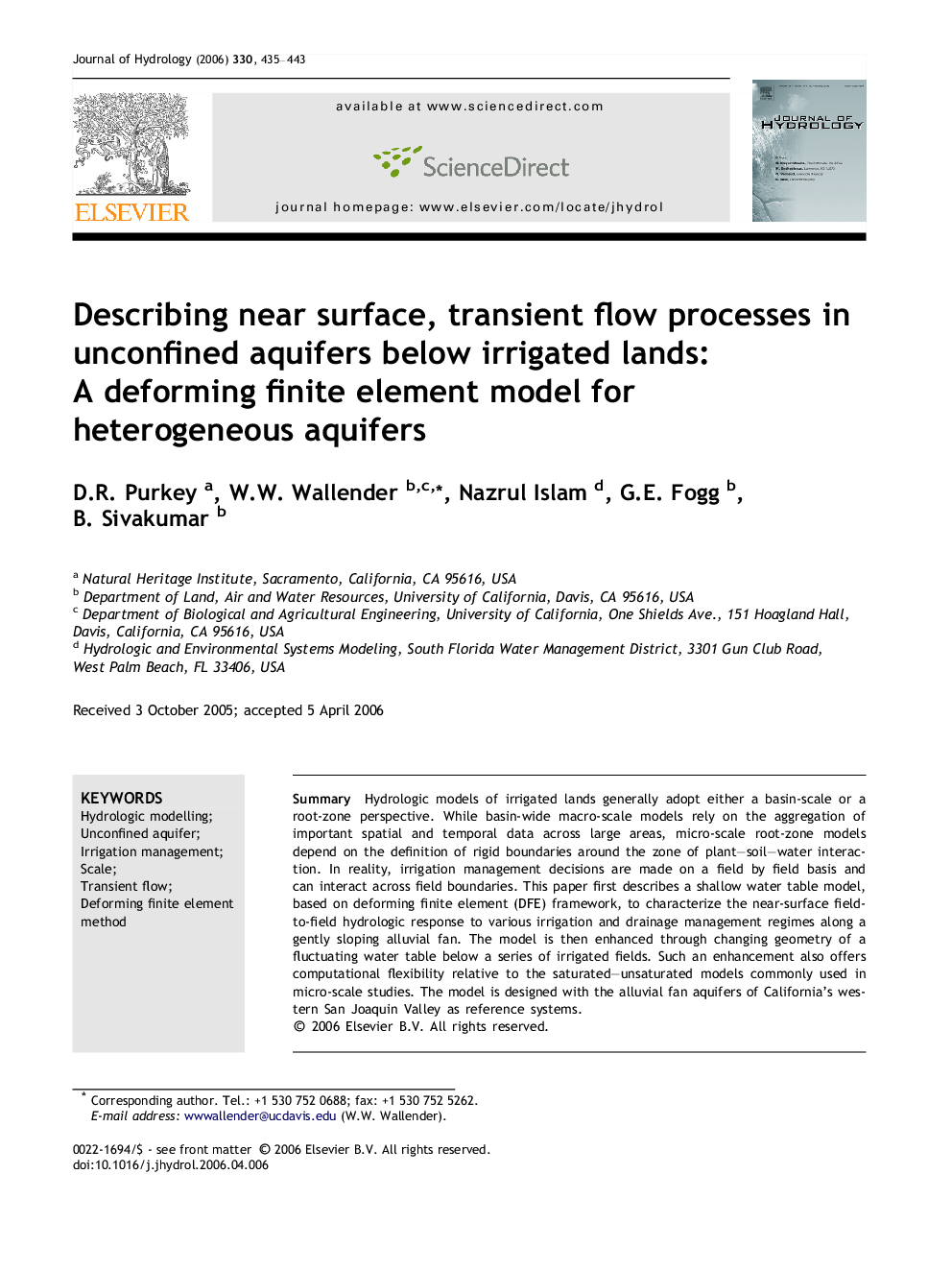| Article ID | Journal | Published Year | Pages | File Type |
|---|---|---|---|---|
| 4580416 | Journal of Hydrology | 2006 | 9 Pages |
SummaryHydrologic models of irrigated lands generally adopt either a basin-scale or a root-zone perspective. While basin-wide macro-scale models rely on the aggregation of important spatial and temporal data across large areas, micro-scale root-zone models depend on the definition of rigid boundaries around the zone of plant–soil–water interaction. In reality, irrigation management decisions are made on a field by field basis and can interact across field boundaries. This paper first describes a shallow water table model, based on deforming finite element (DFE) framework, to characterize the near-surface field-to-field hydrologic response to various irrigation and drainage management regimes along a gently sloping alluvial fan. The model is then enhanced through changing geometry of a fluctuating water table below a series of irrigated fields. Such an enhancement also offers computational flexibility relative to the saturated–unsaturated models commonly used in micro-scale studies. The model is designed with the alluvial fan aquifers of California’s western San Joaquin Valley as reference systems.
